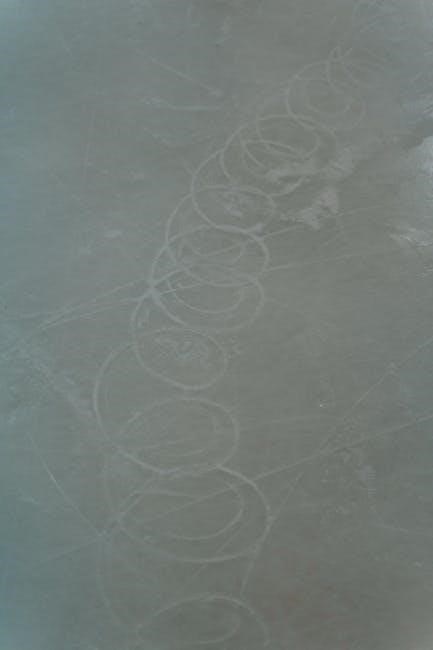- initial assessment and diagnosis to determine the best course of treatment and create a personalized exercise plan with a physical therapist using a distal radius fracture exercises pdf.
Overview of Conservative Management
Conservative management of distal radius fractures typically involves immobilization in a plaster cast or splint to allow the bone to heal. This approach is often used for uncomplicated fractures where the bone is still in a relatively good position. The goal of conservative management is to minimize discomfort and promote healing, while also preventing further injury to the affected area. A distal radius fracture exercises pdf can provide guidance on the best exercises to perform during this period. The management plan may include regular follow-up appointments with a healthcare provider to monitor progress and adjust the treatment plan as needed. In some cases, a manipulation may be performed in the emergency department to realign the bone, followed by immobilization. Conservative management can be an effective approach for many patients, allowing them to recover from their injury without the need for surgical intervention. A healthcare provider can determine the best course of treatment for each individual patient.
Importance of Physiotherapy
Physiotherapy plays a crucial role in the recovery process after a distal radius fracture, as it helps to restore strength, flexibility, and range of motion to the affected wrist and hand. A distal radius fracture exercises pdf can provide a guide for physiotherapists to create a personalized exercise program for patients. Research has shown that physiotherapy can be effective in improving outcomes for patients with distal radius fractures, particularly when started early in the rehabilitation process. Physiotherapists can help patients to gradually increase their mobility and strength, reducing the risk of stiffness and promoting a full recovery. By working with a physiotherapist, patients can learn how to perform exercises correctly and safely, minimizing the risk of further injury. Regular physiotherapy sessions can also help to monitor progress and address any concerns or complications that may arise during the recovery process, ensuring the best possible outcome for patients. Effective physiotherapy can make a significant difference in the recovery process.

Exercises for Distal Radius Fracture Rehabilitation
Rehabilitation exercises include mobilization and strengthening using a distal radius fracture exercises pdf guide for patients to follow at home with a physical therapist.
Wrist Flexion and Extension Exercises
Wrist flexion and extension exercises are essential for distal radius fracture rehabilitation, helping to improve range of motion and reduce stiffness.
These exercises can be performed with the forearm supported on a table, allowing the wrist to move freely.
The patient should slowly bend their wrist, moving their hand upward, and then straighten it again, repeating the motion for several repetitions.
It is also important to include exercises that target the flexor and extensor muscles of the wrist, such as wrist curls and extensions.
A distal radius fracture exercises pdf can provide a guide for patients to follow at home, with illustrations and instructions for each exercise.
Regular practice of these exercises can help to promote healing, improve function, and reduce the risk of long-term disability.
By incorporating wrist flexion and extension exercises into their rehabilitation program, patients can regain strength and mobility in their wrist and hand, and return to their normal activities.Tendon Gliding Exercises
Tendon gliding exercises are a type of exercise that helps to improve the mobility of the tendons in the hand and wrist after a distal radius fracture.
These exercises involve moving the fingers and wrist in a specific way to help the tendons glide smoothly under the skin.
A distal radius fracture exercises pdf can provide a guide for patients to follow, with illustrations and instructions for each exercise.
The exercises typically include a series of finger movements, such as straightening and bending the fingers, and making a fist.
The goal of tendon gliding exercises is to help the tendons move freely and smoothly, reducing the risk of stiffness and improving range of motion.
By performing these exercises regularly, patients can help to promote healing and improve function in their hand and wrist.
Tendon gliding exercises can be started early in the rehabilitation process, and can be modified as the patient progresses and their range of motion improves.
Regular practice of these exercises can help patients to regain strength and mobility in their hand and wrist.
Non-Operative Rehabilitation Protocol
Protocol focuses on minimizing immobilization stiffness with exercises from a distal radius fracture exercises pdf to maximize digit and wrist range of motion and supination abilities slowly.
Goals of the Protocol
The primary goals of the non-operative rehabilitation protocol for distal radius fractures are to minimize post-immobilization stiffness and maximize digit and wrist range of motion, especially supination abilities, using a distal radius fracture exercises pdf.
This is achieved through a combination of exercises and physical therapy techniques, including wrist flexion and extension, tendon gliding, and finger bending, which help to improve joint mobility and reduce pain and stiffness.
The protocol also aims to promote functional recovery, enabling patients to regain their normal daily activities and maintain independence, with a focus on gradual progression and individualized treatment plans.
By following the protocol and exercising regularly, patients can expect to see significant improvements in their wrist and hand function, reducing the risk of long-term disability and promoting a full recovery from the fracture.
Overall, the goals of the protocol are to provide a safe and effective treatment approach for distal radius fractures, using a distal radius fracture exercises pdf as a guide.Example Exercises
Example exercises for distal radius fracture rehabilitation include wrist flexion and extension, tendon gliding, and finger bending, which can be found in a distal radius fracture exercises pdf.
These exercises are designed to improve joint mobility and reduce pain and stiffness, and can be modified to suit individual needs and abilities.
A physical therapist can provide guidance on proper technique and progression, and help patients develop a personalized exercise program.
The exercises can be performed at home, using simple equipment such as a towel or resistance band, and can be incorporated into daily activities to promote functional recovery.
By following a consistent exercise routine, patients can expect to see significant improvements in their wrist and hand function, and reduce the risk of long-term disability.
Regular exercise can also help to promote bone healing and reduce the risk of complications, making it an essential part of the rehabilitation process, as outlined in a distal radius fracture exercises pdf.
Rehabilitation with exercises from a distal radius fracture exercises pdf improves outcomes and reduces complications with proper technique and guidance from a physical therapist using online resources.
Importance of Following a Rehabilitation Protocol
Following a rehabilitation protocol is crucial for optimal recovery from a distal radius fracture, and using a distal radius fracture exercises pdf can help guide the process. A well-structured protocol helps prevent complications and promotes healing.
It allows for a gradual progression of exercises, reducing the risk of re-injury and ensuring the fracture heals properly. A rehabilitation protocol also enables patients to track their progress and stay motivated throughout the recovery process.
Additionally, a protocol helps physical therapists and healthcare professionals monitor patient progress and make adjustments as needed, ensuring the best possible outcomes. By following a rehabilitation protocol and using a distal radius fracture exercises pdf, patients can expect a faster and more successful recovery.
